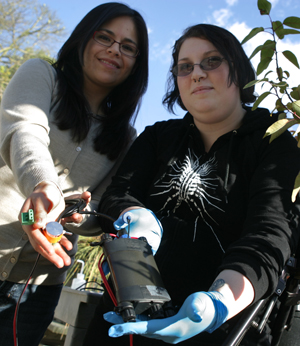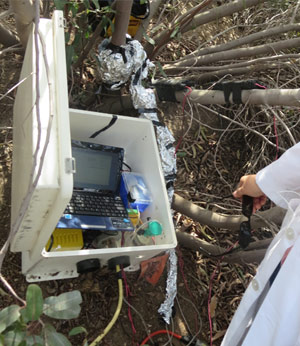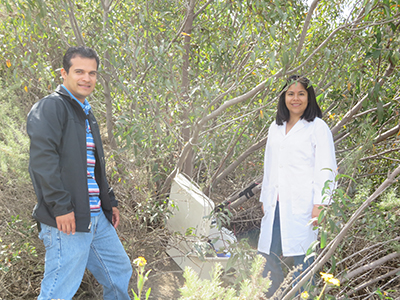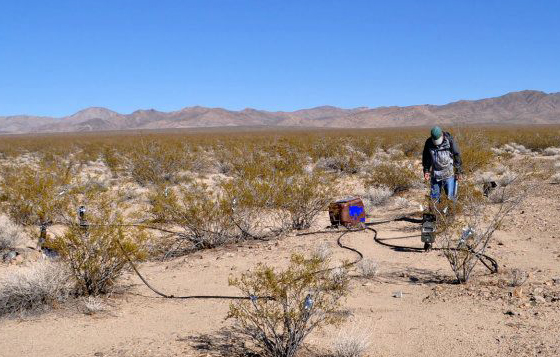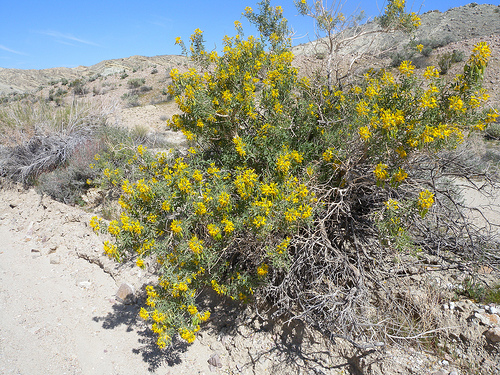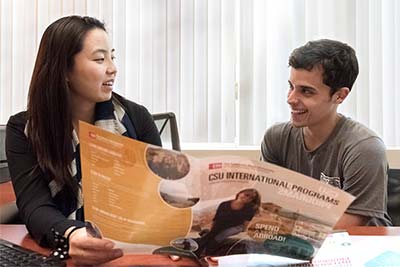Research
Arboretum and Botanical Garden at Cal State Fullerton is a Level IV ArbNet accredited
arboretum and one key component to our accreditation is our contribution to research
and conservation projects. Our collection features plants from around the world and
is made globally accessible through Botanic Gardens Conservation International. We
welcome the use of our collection in a wide variety of collaborative research and
conservation projects.
University Stem Initiative: Monitoring Air Bubbles in Plants
Plants that develop air bubbles in their hydraulic system don’t get enough water.
Severe cases can lead to the death of roots, branches or the whole plant, explains
Dr. Schenk, a plant biologist and CSUF faculty member since 2002. Read the article from CSUF News to find out more.
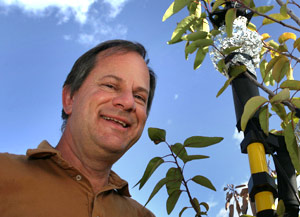
H. Jochen Schenk, Professor of Biological Science & Susana Espino, Research Scientist
×
Research in the Plants & H2O Lab at Cal State Fullerton
Research in the Plants & H2O Lab addresses many aspects of the interactions between
plants and water and ranges in scope from plant physiology to the role of plants in
the global water cycle. The current focus is on plant hydraulics, the structure and
function of plant hydraulic systems, and specifically on how plants deal with air
bubbles (embolisms) that can form in their water-conducting systems during drought
stress or frost. Our research explores basic physiological mechanisms of plant water
transport and drought tolerance, as well as the implications for water conservation
and irrigation needs of horticultural plants. Most of the research involves undergraduate
and graduate students, and much of the research since the year 2006 has been conducted
at Fullerton Arboretum, mainly on plants in the desert collection, on chaparral hill,
the subtropical woodland collection and the cultivated orchard collection.
Close
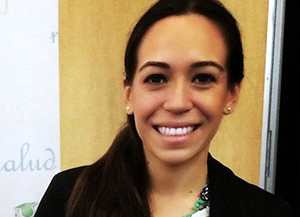
Alex (Gloria) Gallardo, biology undergraduate student, project 2013–14
×
Xylem sap proteins in Phymosia umbellata
Alex studied the plant Phymosia umbellata (Fa. Malvaceae), a large forest shrub native
to Mexico grown in the Arboretum’s subtropical woodlands collection. The goal of this
project was to analyze the sap for proteins that may play a role as surfactants and
coat bubbles that form in the plants’ hydraulic system under drought conditions.
Close
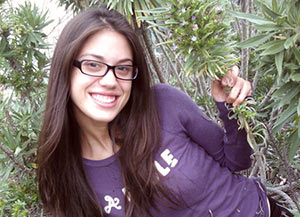
Velia Villarreal, biology undergraduate, project 2012–14
×
Ultrasonic emissions from drying woody plant stems
Velia conducted research on ultrasonic acoustic emissions associated with bubble (embolism)
formation in the shrub species Echium candicans (Fam. Boraginaceae) and Malosma laurina
(Fam. Anacardiaceae). The cohesion-tension theory states that water within a plant
moves under negative pressure (i.e., tension). As a plant is subjected to drought,
tension increases, which can cause water to rapidly convert from the liquid into the
gas phase, forming embolisms. This event, called cavitation, produces ultrasonic acoustic
emissions. It is hypothesized that as a plant dries and loses hydraulic conductivity
the amount of embolisms increases, and as a result more acoustic emissions are produced.
Velia successfully tested this hypothesis for the two species she studied, including
Malosma laurina on chaparral hill in Fullerton Arboretum.
Close
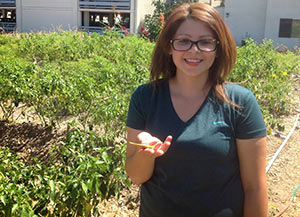
Miriam Morua, biology undergraduate student, 2012–13
×
Effects of surface drip irrigation compared to sub surface irrigation on the yield
of peppers
Conservation of irrigation water is a major concern for urban agriculture in semi-arid
regions such as southern California. Miriam carried out a field experiment in Fullerton
Arboretum in 2013 in order to compare the efficiency of different drip irrigation
systems for growing arbol and poblano peppers. The two systems that were compared
were surface irrigation and subsurface irrigation. The highest productivity of peppers
was seen for plants under subsurface irrigation and soil moisture contents for subsurface
irrigation varied less over time than those for surface irrigation. This suggests
that there was less evaporation and more water retention in the soil. Thus, it is
concluded that (at about the same price) subsurface irrigation is a better system
for conserving water and maintaining high pepper yields.
Close
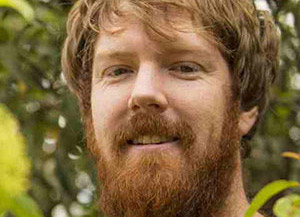
Donald D. Quick, biology master’s student, 2012–present
×
Correcting temperature effects for stem-psychrometry on deeply-rooted plants
Stem psychrometer measurements allow continuous measurements of plant water status
and water stress by measuring sapwood water potentials. Stem psychrometer measurements
of water potentials for plants in the field often vary strikingly from those made
for the same plants using a pressure chamber, which is the standard method but is
destructive and labor intensive. Psychrometers measure water potential as the relative
humidity in a small, air-tight chamber attached to a section of exposed sapwood. Psychrometric
measurements are highly temperature dependent. Deeply rooted plants, such as the chaparral
shrubs Malosma laurina (Fam. Anacardiaceae), Heteromeles arbutifolia (Fam. Rosaceae)
and the Mediterranean tree Quercus suber (Fam. Fagaceae), all on chaparral hill in
the Arboretum, tap cool water deep in the soil, which may create temperature gradients
within the plant that can affect psychrometric readings. The goal of this research
project is to correct pyschrometric measurements for temperature gradients in the
wood, which would make it possible to use stem psychrometers on many more plants in
the field.
Close
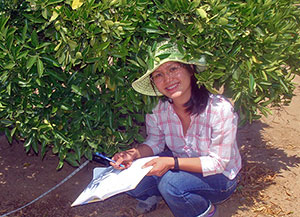
Emily Wieber, biology undergraduate, 2010–12, master’s student, 2012–present
×
Drought tolerance and xylem vulnerability of citrus trees
Emily studied the drought tolerance of three citrus varieties in the cultivated orchard
collection of Fullerton Arboretum: Valencia orange, Star Ruby red grapefruit and tangerine.
To investigate physiological mechanisms of drought tolerance, she measured the formation
of xylem embolisms, air bubbles that prevent water flow through vascular tissues,
in stems. She also tested sap-flow sensors on the Arboretum’s Valencia orange trees
before installing them on Navel orange trees at UC Riverside’s Citrus Experiment Station
for her master’s thesis project.
Close
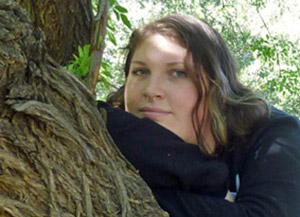
Sarah Taylor-Laine, biology undergraduate, 2011–12, master’s student, 2011–present
×
Hydraulic conductance and xylem osmoregulation in Laurel Sumac (Malosma laurina)
As an undergraduate, Sarah used Laurel Sumac to test a new method to measure the movement
of water through plants in real time. This method has advantages over previous methods
because it can be used on living plants in the field, allowing quantification of plant
physiological parameters in real time and under natural conditions. As a graduate
student, Sarah is studying how living cells embedded within the wood of plants are
related to hydraulic functioning, especially under drought stress. Specifically, these
cells are thought to use sugars to aid in the repair of air-filled xylem conduits.
She is still working with her favorite plant, Laurel Sumac, on chaparral hill in the
Arboretum.
Close
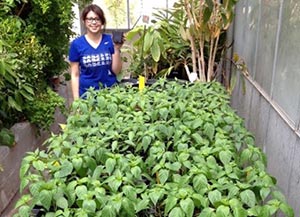
Miriam Morua, biology master’s student, 2014–present
×
Investigating continuous measures of water stress for avocado trees to guide irrigation
decisions
California is currently suffering from persistent drought, which has spurred new interest
in developing ways of irrigation that minimizes water use. One way to do this is to
irrigate only when plants truly need additional water. Trees continuously adjust their
own water balance, and measuring this physiological variable can be useful for irrigation
scheduling of orchards. The purpose of this study is to investigate plant-based measures
of water stress in avocado trees that can be continuously monitored to be used for
irrigation decisions. The level of water stress in the trees will be determined directly
using destructive measurements of leaf water potential. Other responses to water stress
that will be continuously measured will include stem diameter variations, branch sap
flow, trunk sap flow, trunk water potential and wood water content. Leaf water potential,
a direct, destructive water stress measure, will be compared to the continuous measurements
to determine the best continuous, plant-based measures for irrigation scheduling.
Close
More Research Projects
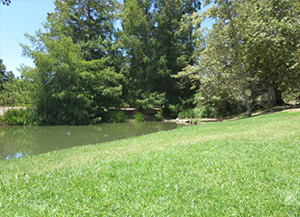
Elizaveta Litvak, Neeta Bijoor, Diane Pataki, Heather McCarthy
×
Evapotranspiration
In 2014, Elizaveta Litvak, Neeta Bijoor and Diane Pataki, assessed the contribution
of turfgrass and the role of tree shading in evapotranspiration of irrigated landscapes
in the Los Angeles region. The Fullerton-Arboretum-managed lawn was one of the eight
chosen lawns for this study. They used portable chamber measurements and empirical
modelling to estimate irrigated turfgrass evapotraspiration and analyze its variability
and environmental control. It was concluded that reductions in turfgrass evapotranspiration
caused by shading effects of open-grown trees were more important in influencing total
landscape evapotranspiration than the addition of tree transpiration. This suggests
that low-density planting of trees that partially shade irrigated urban lawns may
be a water-saving measure in semi-arid irrigated environments.
Litvak E, Bijoor NS, Pataki DE. 2014. Adding trees to irrigated turfgrass lawns may
be a water-saving measure in semi-arid environments. Ecohydrology, In press (DOI:
10.1002/eco.1458)
In 2012, Elizaveta Litvak, Heather McCarthy and Diane Pataki, studied stomatal responses
to pressure deficit in irrigated trees in the urban landscape of Los Angeles, California.
In 2008, sap flux data from the grove of irrigated coast redwood (Sequoia sempervirens)
from Fullerton Arboretum was collected and compared to seven other sites. The study
confirms systematic differences in water relations in ring-versus diffuse-porous species,
but these differences appear to be more strongly related to the relationship between
stomatal sensitivity to pressure deficit and vulnerability to cavitation than to stomatal
sensitivity per se.
Litvak E, McCarthy HR, Pataki DE. 2012. Transpiration from urban trees in a semi-arid
climate is constrained by xylem vulnerability to cavitation. Tree Physiology 32: 373-388.
In 2011, Elizaveta Litvak, Heatehr McCarthy and Diane Pataki, investigated the water
relations of coast redwood (Sequoia Sempervirens) planted in the urbanized semi-arid
Los Angeles Basin, where the trees often experience leaf chlorosis and senescence.
Coast redwoods from Fullerton Arboretum represented one of the three sites of the
irrigated, urban trees that were used for this experiment. It was concluded that water
stress was not a direct factor in causing leaf chlorosis and senescence as has been
proposed. Instead, the relatively strong stomatal control that is adaptive in the
native habitat of coast redwood may lead to carbon limitation and other stresses in
semi-arid, irrigated habitats.
Litvak E, McCarthy HR, Pataki DE. 2011. Water relations of coast redwood planted in
the semi-arid climate of Southern California. Plant, Cell and Environment, 34(8):
1384-1400.
Visit the Urban Ecology Research Lab
Close
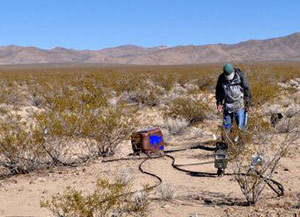
Miguel Macias, Darren Sandquist (CSUF), David Bedford, David Miller (USGS)
×
Road Disturbances in the Mojave Desert
In 2013, Miguel Macias, Darren Sandquist (CSUF), David Bedford and David Miller (USGS)
conducted an experiment to quantify road disturbances in the Mojave Desert. Sap-flow
gauges were used on creosote bush (Larrea tridentate) to provide automated and efficient
long-term measurements after simulating rain events at three sites on the foot of
the Providence Mountains in the Mojave Desert. Miguel Macias is currently collecting
stem samples from Fullerton Arboretum to calibrate the sap-flow gauges and determine
the accuracy of the home-made device.
Close
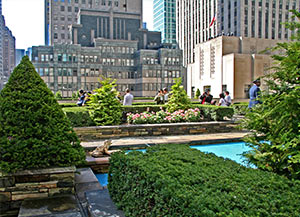
Matthew Ballew, doctoral student in applied social psychology at Claremont Graduate
University
×
Experiences in Nature
Research on the effects that nature has on us finds that environments with more natural
features (e.g., vegetation and plants) as compared to manmade characteristics (e.g.,
buildings and concrete) are associated with a range of positives, such as coping better
with stress (Parsons, 1991) and greater positive affect (Berman et al., 2012). Matthew
Ballew, a doctoral student in applied social psychology at Claremont Graduate University,
is currently studying the psychological effects of experiences in nature at Fullerton
Arboretum. He hopes to contribute to literature on the causal positive effects from
nature and will communicate his findings upon completion of the study.
Close
U-Acre: A Research and Outreach Partnership

View the article, "CSUF student researchers look to sweet potatoes as natural alternative in fighting
aggressive weed," to read how Fullerton Arboretum, Cal State Fullerton’s U-ACRE program and Monkey
Business Cafe in Fullerton are partnering to provide farm-to-table produce and teach
research and life skills to CSUF students and youth who have been in the foster care
system.
Visit the U-ACRE page for more information.















